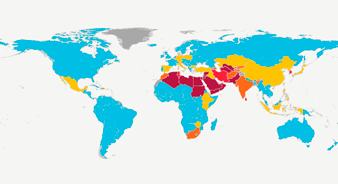Indicator 6.4.2 “Level of water stress: freshwater withdrawal as a proportion of available freshwater resources”
Target 6.4 seeks to ensure sustainable withdrawals and supply of freshwater to address water scarcity – this page explains why and how to monitor progress towards the target.
The indicator at a glance
Indicator 6.4.2 tracks how much freshwater that is being withdrawn by all economic activities, compared to the total renewable freshwater resources available. It also takes into account environmental flow requirements.
Data can be disaggregated geographically (water basin), by source (surface water/groundwater) and by economic activity.
Data on water withdrawals and total water resources available are commonly collected by national line ministries and institutions (e.g. for Water, Agriculture and Environment) and the National Statistical Office.
Available support
The Food and Agriculture Organization of the United Nations (FAO) is the custodian of indicator 6.4.2. For any enquiries about available support, please contact their helpdesk.
Guidance on data collection and reporting
- FAO: Monitoring methodology.
- FAO: Guidelines for incorporating environmental flows.
- UN-Water: Data collection process and timeline.
Online support
- FAO: Helpdesk (email, phone, video conference).
- FAO: Publications.
- FAO: E-learning course.
- FAO: E-learning course on environmental flows.
- FAO IMI-SDG6 website.
Face-to-face support
- National workshops in selected countries.
- Regional workshops.
Data and progress reporting
- UN-Water: SDG 6 Data Portal.
- FAO AQUASTAT: 6.4.2 data.
- FAO AQUASTAT Database.
- FAO on behalf of UN-Water: 2018 Progress Report.
- FAO on behalf of UN-Water: 2021 Progress Report (including infographics).
- FAO on behalf of UN-Water: 2024 Progress Report (including visual summary and video).

Why monitor water stress?
Water basin level data on water stress allows for an analysis of water scarcity and its impact on the population, the economy and the environment.
